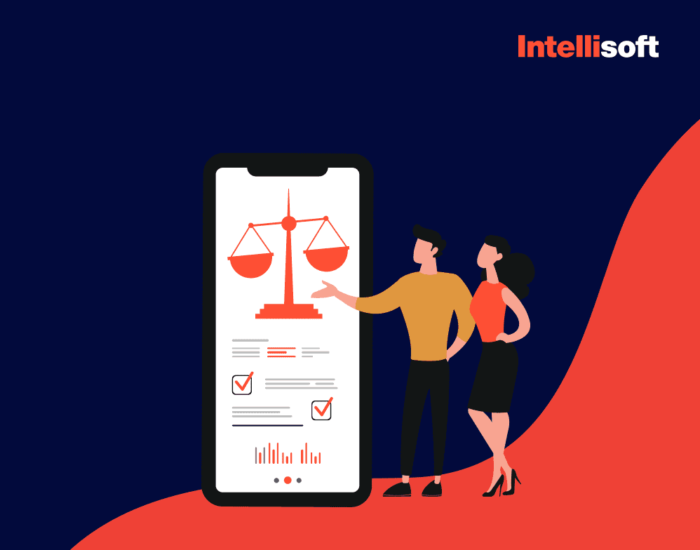Clients’ testimonials
Transform Your Business Idea into Product With MVP Development Services for Startups
Why build a Minimum Viable Product?
Idea Validation
By developing an MVP, you can validate your idea early on and avoid unnecessary spending and employee effort. This method allows you to test the feasibility of your concept and make informed decisions before investing in a full-scale product.
Budget Optimization
Building an MVP can help you save your budget for other projects if your idea fails the feasibility test. Thus, you can focus your resources on more promising ideas and avoid wasting time and money on concepts that don’t work.
Time-to-Market
An MVP can be developed and launched quickly by focusing on top-priority features, shortening the product’s time-to-market, which allows you to respond to market demand more rapidly and gain a competitive edge.
User Feedback
Developing an MVP also allows for seamless improvement based on user feedback, which means you can better meet users’ requirements and needs and rapidly increase adoption rates.
MVP Development Services We Provide
We Build Custom MVPs For Different Businesses
Start-ups
Small & medium businesses
Large businesses
Reasons To Hire IntelliSoft
Streamlined communication
Top-notch project management
Consistent delivery
Scaling on demand
Fast onboarding
Relevant data for grounded decisions
How We Develop MVP Software
Industries we serve
Download our portfolio with previous projects
The best proof of our work is the portfolio with our past projects. You can see what IntelliSoft’s clients think about our cooperation. Check out projects for various industries.

MVP Software Development Tech Stack
Related Services
Frequently Asked Questions (FAQ)
There is no one-size-fits-all answer to this question since the choice of technologies depends on various factors, such as the nature of the MVP, the team’s skill set, the project budget, and time constraints. However, some technologies are more commonly used in MVP development due to their flexibility, speed, and ease of use. Here are a few popular ones:
- Web Development Frameworks: Frameworks like Ruby on Rails, Django, and Laravel are widely used for web application development, including MVPs. They provide pre-built components and modules that speed up the development process and allow developers to focus on the unique features of the MVP.
- JavaScript Frameworks: Popular front-end frameworks like React, Vue.js, and Angular are excellent for building MVPs with modern user interfaces. They offer reusable components and make building interactive and responsive user interfaces easy.
- No-code/Low-code platforms enable non-technical users to build MVPs with drag-and-drop interfaces, pre-built templates, and simple workflows. Examples include Bubble, Webflow, and Glide.
- Cloud Services: Cloud services like AWS, Google Cloud, and Azure provide a range of tools and services that help developers build MVPs quickly and easily. These services include database management, hosting, storage, and more.
- Mobile App Development Frameworks: For MVPs that require a mobile app, frameworks like React Native, Flutter, and Xamarin are commonly used. They allow developers to build cross-platform apps using a single codebase and offer a range of pre-built components and modules.
Ultimately, the choice of technologies should be based on the specific requirements of the MVP product management and the team’s expertise.
Outsourcing an MVP can be a good decision for start-ups, but it depends on various factors. Here are some potential pros and cons to consider:
Pros:
- Cost savings: Outsourcing an MVP can be less expensive than hiring a full-time in-house team, primarily if the start-up is located in a country with a high cost of living.
- Access to expertise: Outsourcing can provide access to a wide range of technical knowledge that might not be available in-house, allowing the start-up to build a better MVP.
- Faster time-to-market: Outsourcing can speed up the MVP development process, as external teams are often more experienced and specialized and can work faster than an internal team.
- Flexibility: Outsourcing can provide more flexibility in scaling up or down the development team as needed without the overhead costs of hiring and training new staff.
Cons:
- Lack of control: Outsourcing can make it more difficult for start-ups to manage the development process, monitor progress, and make changes to the product as needed.
- Communication issues: Outsourcing can lead to communication issues due to language barriers, time zone differences, and cultural differences.
- Quality issues: Outsourcing can lead to lower quality work if the external team lacks expertise, experience, or motivation or if language barriers result in misunderstandings or miscommunications.
- Security risks: Outsourcing can create risks if sensitive data or intellectual property is shared with an external team.
- Outsourcing an MVP can be a good decision for start-ups if they carefully consider the pros and cons and choose a reliable, experienced outsourcing partner.
In the case of outsourcing an MVP development project, it is standard practice for service providers to sign a Non-Disclosure Agreement (NDA) with their clients to ensure the confidentiality and protection of their data.
At IntelliSoft, for instance, we understand the importance of data privacy and security for our clients. We always sign NDAs before starting any project to protect our client’s intellectual property and other sensitive information.
Additionally, we implement strict security protocols and best practices, such as using encrypted communication channels and limiting access to confidential data to authorized personnel only.
Choosing a reliable MVP software development company is crucial for the success of your project. Here are some steps you can take to find a reputable company:
- Look at their portfolio: Check their website for a portfolio of their previous work. Look for examples of MVPs they have built and evaluate their quality.
- Read reviews and testimonials: Check out third-party review sites like Clutch.co or Glassdoor for reviews from previous clients. You can also check the company’s website for testimonials from clients.
- Check their expertise: Ensure the company has experience developing MVPs for your industry, which can help them understand your business requirements better and provide appropriate solutions.
- Evaluate their communication: Ensure the company has clear communication channels and is responsive to your inquiries, which can help avoid misunderstandings and ensure that your project is completed on time.
- Check their development process: Ensure the company follows a transparent development process and uses Agile methodologies that can help them deliver a high-quality MVP that meets your business requirements.
- Discuss security measures: Discuss with the company how they handle security measures, data protection, and NDAs. Ensure that they follow industry-standard security protocols to protect your sensitive data.
- Discuss pricing: Ensure the company provides a transparent pricing model and project timeline. Compare the pricing with other MVP development companies to ensure that you get the best value for your money.
Following these steps, you can choose a reliable MVP software development company that meets your business requirements and delivers a high-quality MVP.
Savvy entrepreneurs often use MVP development services in USA for testing and validating their ideas with real customers before investing significant time and money into developing a full-fledged product. Here are a few reasons why intelligent entrepreneurs might need an MVP:
- Idea validation: An MVP can help entrepreneurs determine whether their product has market potential and whether there is a demand for it.
- Cost savings: Building an MVP allows entrepreneurs to minimize upfront costs by focusing only on the product’s critical features and functionalities.
- Time-to-market: An MVP can help entrepreneurs launch their product faster, allowing them to beat their competitors to market and gain early traction.
- User feedback: An MVP allows entrepreneurs to gather valuable feedback from early adopters, which they can use to improve their products and refine their market strategy.
- Risk reduction: By testing their product with an MVP, entrepreneurs can reduce the risk of developing a product that nobody wants, saving them time, money, and resources.
The time it takes to develop MVP software depends on various factors, such as the complexity of the product, the technology stack used, the number of features required, and the size of the development team. Generally, MVP development takes 2-6 months, but it can be longer or shorter depending on the project’s specific requirements. It is important to note that MVP development focuses on speed to market, so the development timeline is usually faster than that of a fully-featured product. However, the timeline can vary significantly based on the project’s specific needs, and it is best to discuss timelines with the development company or team working on the project.
The cost of building an MVP (Minimum Viable Product) can vary widely depending on the project’s complexity, the technologies involved, and the development team’s location and experience.
A simple MVP with basic features can cost as low as $10,000, while more complex
MVPs with advanced features and integrations can cost over $100,000.
It’s important to note that investing in the development of MVP is a crucial step in developing a successful product, and it’s often better to focus on building a quality MVP that meets the core needs of your target audience rather than trying to cut costs. A well-built MVP can save time and money in the long run by providing valuable feedback from early adopters and allowing you to iterate and improve the product based on real-world usage.
Building an efficient Minimum Viable Product (MVP) for a business involves several development phases. Here are some key considerations to keep in mind:
- Identify the core features: Identify the core features your product needs to have to solve your customers’ pain points. Focus on developing these features first to test your idea in the market and validate the need for your product.
- Define the target audience: Define your target audience and create user personas to understand their needs and behavior. This step will help you design the MVP that resonates with your target audience.
- Keep it simple: Keep the MVP simple and avoid adding unnecessary features. The goal is to test your idea with minimal investment and effort, so focus on the key elements that solve the main problem.
- Choose the right technology stack: Choose the right technology stack that allows you to build the MVP efficiently and quickly. Consider using frameworks and tools that enable rapid prototyping and development.
- Get feedback: Once you have developed the MVP, get feedback from your target audience and iterate based on the input to help you improve the product and make it more relevant to your audience.
- Test and validate: Test and validate the MVP with real users to gather data and insights. Use this information to make informed decisions about future development and to refine your product roadmap.
- Plan for scalability: Plan for scalability from the beginning to ensure that the MVP can handle growth and future iterations of the product for choosing the right architecture and development practices and anticipating future needs and requirements.
Using a Minimum Viable Product (MVP) provides several benefits for businesses, including:
- Early validation of business ideas: An MVP allows businesses to test their product idea in the market and gather feedback from early adopters. This step helps companies to validate their idea before investing significant time and resources in building a fully-functional product.
- Cost savings: Building an MVP requires fewer resources and costs than building a fully-functional product. This factor helps businesses save money and invest their resources more efficiently.
- Faster time-to-market: An MVP can be developed and launched quickly, allowing businesses to enter the market faster and gain a competitive advantage.
- User feedback: An MVP allows businesses to gather user feedback early in the development process, helping them improve their product and make it more user-friendly.
- Risk mitigation: By testing the market with an MVP, businesses can identify potential problems and risks early on and make changes to the product before investing significant resources.
Overall, using a startup MVP development approach can help businesses develop products that meet the needs of their target audience while minimizing costs, risks, and time-to-market.
The cost and time for MVP development services in USA can vary depending on project complexity, development methodology, technology stack, features required, and other specific requirements.
Consult with IntelliSoft to discuss the details of startup MVP development to get an accurate estimate of the cost and timeline for developing your MVP.






